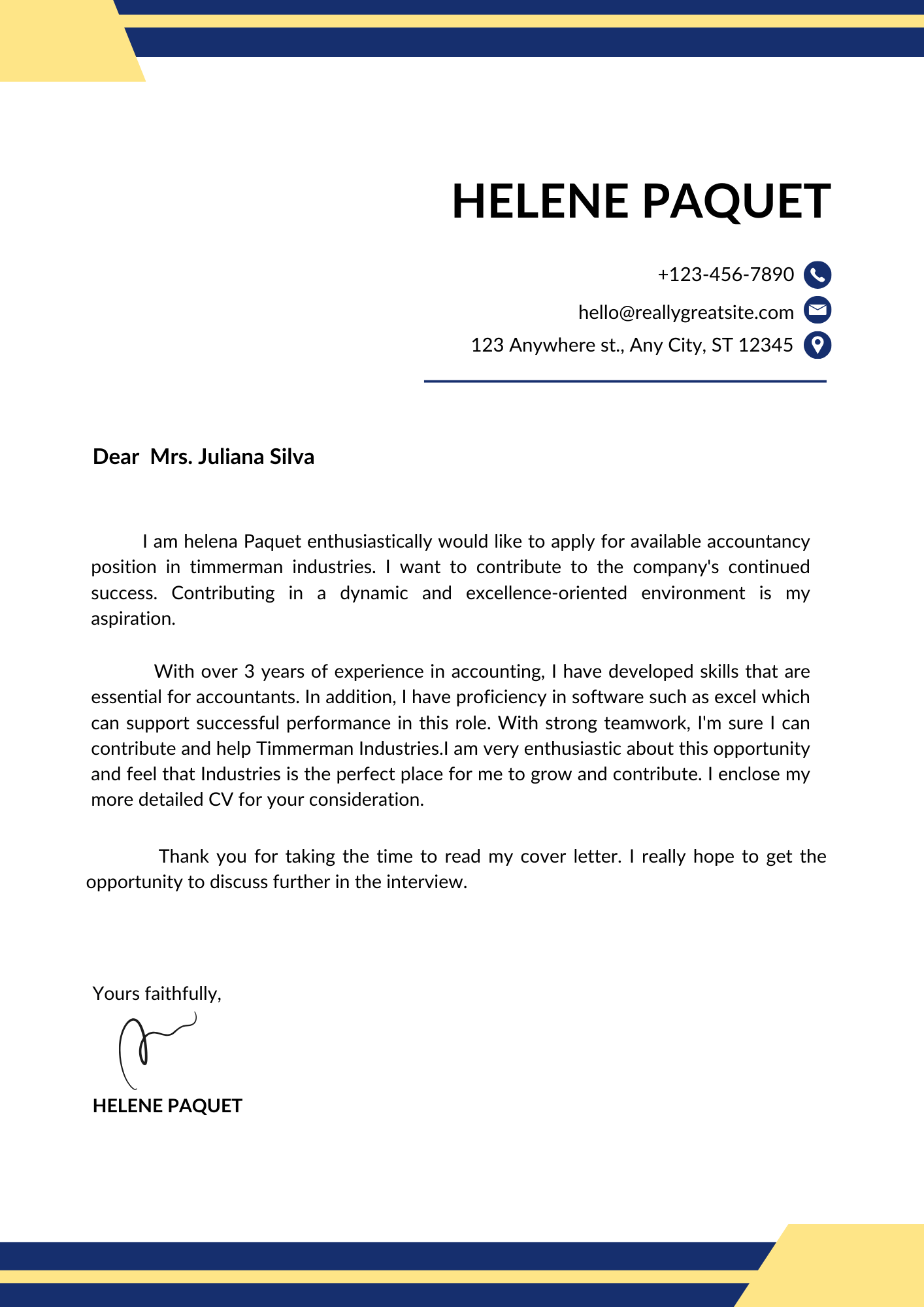A cover letter is a short document, usually between 200 and 400 words, designed to convince the hiring manager that you are a good fit for the job. Despite its importance, many users overlook its importance or find it difficult to compose effective music. Let’s delve into the purpose of a cover letter and find out how to create one that makes a lasting impression on potential employees.
What is a Cover Letter?
A cover letter is a special piece of paper that you include with your job application (Resume) to greet the person who might hire you. This letter should explain why you are qualified for the position and why you are interested. You can show them the amazing things you have done in the past and how you can help them in their career. This is your chance to show how you want to work for their company and why you are the best candidate for the position.

Is it necessary to send a cover letter?
While not always required, it is wise to include a cover letter with a job application. It makes you stand out, it shows your maturity and it shows interest. Demonstrate suitability by keeping it relevant to the job and company. A well-crafted cover letter sets you apart from other applicants and increases your chances of getting an interview. Even if they don’t ask for it, their participation shows that they are involved. Thus, although not mandatory, a cover letter can greatly improve your job prospects.
How to write a cover letter
1. Research the company and the position
Before you start writing, take the time to research the company and the specific job. Understand the company’s values, culture, and goals, and tailor your resume to show how your skills and experience match up with what they’re looking for.
2. Complete your cover letter
Start with your contact information at the top of the page, followed by the date and employer contact information. Next, start with a professional greeting, preferably addressing the hiring manager by name.
3. Make a compelling introduction
Grab the reader’s attention with a strong first paragraph describing the position you’re applying for and how you found it. Express your interest in the opportunity and briefly explain why you are the best fit for the role.
4. Emphasize your relevant skills and experience
In your resume, detail your most relevant skills and experience that qualify you for the job. Provide specific examples of accomplishments or projects that demonstrate your capabilities and potential contributions to the company.
5. Show interest in the company
Explain why you are interested in working for the company and how your values align with theirs. Research the company’s mission, culture, and recent accomplishments, and incorporate this knowledge into your cover letter to show that you are genuinely interested in the opportunity.
6. Close tightly
End your resume with a strong closing paragraph that reiterates your interest in the position and demonstrates your willingness to further evaluate how your skills and experience fit with the needs of the company written on the back of your letter. Thank the employer for considering your application
7. Proofread and Edit
Before submitting your cover letter, check it carefully for any word errors, typos or inconsistencies. Consider asking a friend or mentor to review it as well for feedback and suggestions for improvement.
Read More
Frequently asked questions about coverage
A cover letter is a letter that you send along with your resume when applying for a job. It identifies, explains your passion for the position, and highlights why you are a qualified candidate.
The cover letter allows you to customize your application and reflects your personality, interests and relevant experience. They provide an opportunity to reinforce first impressions of potential candidates.
The cover letter should include your contact information, a professional greeting, an introduction describing the position you are applying for, a summary of your relevant skills and experiences, how you would demonstrate your fit with the company, and a case if difficult to complete
The cover letter is usually one page long, with three to four paragraphs. It should be short and focused, focusing on your most relevant qualifications and experiences.
Whenever possible, send the cover letter to a specific person, such as a hiring manager or recruiter. If the name is not provided in the job title, you can use a generic greeting such as “Dear Hiring Manage”
Analyze the company and job role to understand their needs and requirements. Prepare your cover letter to highlight your relevant skills, experience and accomplishments to match what the employer is looking for.
Use a professional and positive tone throughout the cover letter. Avoid being casual or overly formal, and strive for a balance between professionalism and fun.
You do not need to include references in your cover letter. Instead, focus on highlighting your qualifications and experiences so that you are a strong candidate for the position.
Make your cover letter stand out with an impressive opening style, highlighting relevant accomplishments and experiences, demonstrating passion for the company, and ensuring grammar and on the flawless lines.
While not every job application requires a cover letter, it is generally recommended to include one whenever possible. A well-written cover letter can greatly enhance your application and increase your chances of being noticed by employers.



